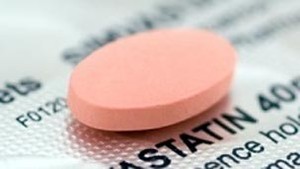Despite evidence supporting the efficacy of statins for the treatment and prevention of cardiovascular disease, a lack of adherence to statin treatment continues to be a major problem. Sicras-Mainar and colleagues investigated real-world treatment persistence and medical possession for generic versus brand-name statins used in routine clinical practice, and assessed associated clinical and economic outcomes [1].
A total of 13,244 electronic medical records were obtained from a database of two regions in Spain. Data from patients who started treatment with generic versus brand-name statins between 1 July 2010 and 30 June 2012 were compared over a follow-up period of 5 years. Adherence was calculated using the medication possession ratio (MPR, representing the number of days of medication supplied divided by the number of treatment days from the index date), and treatment persistence (defined as the time, measured in days, without stopping the initial treatment or switching to another medication at least 30 days after the initial prescription). In addition, clinical outcomes including patient’s at-goal rates of low-density lipoprotein cholesterol (LDL-C), incidence of major cardiovascular events (CVE) and all-cause mortality were assessed, as well as healthcare resource utilization and associated costs.
The analysis revealed that patients who started treatment with a generic statin had significantly lower treatment adherence than patients who started on a brand-name statin in terms of MPR (61.5% vs 65.1%) and persistence (adjusted HR: 0.86 [95% CI: 0.82–0.91]), both p < 0.001. This lower adherence translated into poorer clinical outcomes; 39.2% (95% CI: 38.3%–40.2%) of patients on generics reached their LDL-C goal compared with 42.0% (95% CI: 40.2%–43.7%) of patients on brand-name statins (adjusted odds ratio: 0.87 [95% CI: 0.80%–0.95%], p = 0.003). In addition, the probability of occurrence of a CVE was significantly higher in patients on generics than in patients on brand-name drugs (HR: 1.31 [95% CI: 1.15%–1.50%], p < 0.001), and all-cause mortality was significantly higher in patients on generics (HR: 1.36 [95% CI: 1.15%–1.62%], p < 0.001).
Poorer clinical outcomes in patients who started treatment with generic statins compared with those who started treatment with brand-name statins translated into higher resource use, in particular the mean numbers of primary care visits (56.4 vs 48.1, p < 0.001), specialized care visits (10.0 vs 8.3, p < 0.001) and hospital emergencies (8.3 vs 7.0, p < 0.001). As a consequence of this higher healthcare resource use, the adjusted mean total healthcare cost per patient was higher for generic statins than brand-name statins (adjusted difference: Euros 1137 [95% CI: Euros 997 – Euros 1,277], p < 0.001).
This sequential relationship between lack of adherence and lower persistence, lower clinical effectiveness and greater use of healthcare resources is consistent with existing literature.
Conflict of interest
Authors of the research paper [1] reported conflict of interest. Antoni Sicras-Mainar is an employee of ClinicResearch. The other authors declare that they have no competing interests.
Related articles
Statin generics improves adherence
Efficacy and tolerability of generic and brand-name atorvastatin
Reference
1. Sicras-Mainar A, Sánchez-Álvarez L, Navarro-Artieda R, Darbà J. Treatment persistence and adherence and their consequences on patient outcomes of generic versus brand-name statins routinely used to treat high cholesterol levels in Spain: a retrospective cost-consequences analysis. Lipids Health Dis. 2018;17(1):277.
Permission granted to reproduce for personal and non-commercial use only. All other reproduction, copy or reprinting of all or part of any ‘Content’ found on this website is strictly prohibited without the prior consent of the publisher. Contact the publisher to obtain permission before redistributing.
Copyright – Unless otherwise stated all contents of this website are © 2019 Pro Pharma Communications International. All Rights Reserved.








 0
0











Post your comment